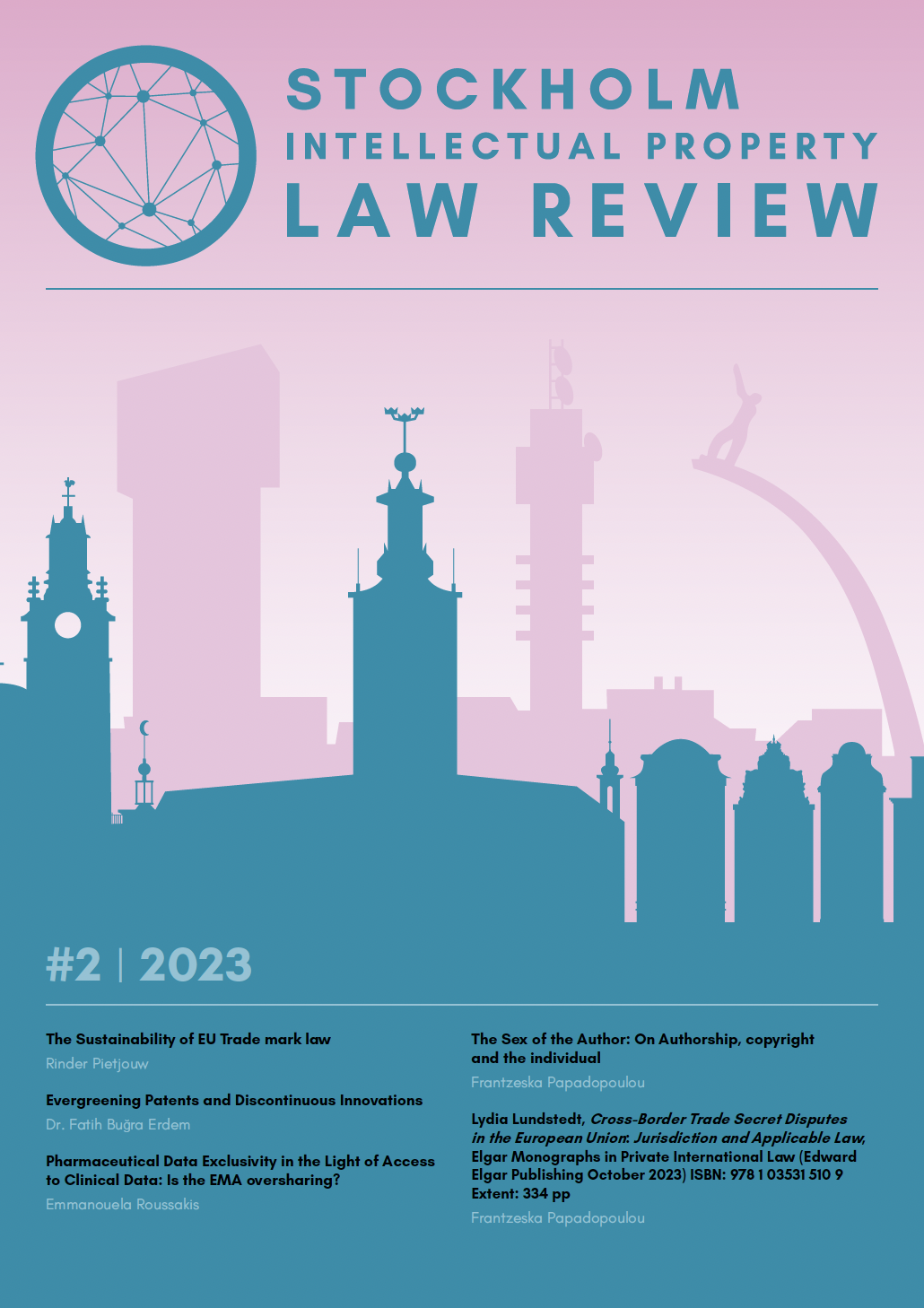
STOCKHOLM INTELLECTUAL PROPERTY LAW REVIEW
Student editor-in-chief and the editorial team
Stockholm IP Law Review
Editorial
The second half of 2023 was marked by a string of landmark events for – not only – the IP world. With the Age of Artificial Intelligence (AI) in full bloom, several endeavours in the legal world have sought to illuminate the legal issues that have arisen in its wake. In April 2021, the European Commission introduced a regulatory framework for AI – the AI Act. Subsequently, following the proposal and the EU Council’s adoption of proposals in December 2022, the European Parliament released its adopted negotiating position and amendments in June 2023. After a ‘marathon’ of negotiations, a provisional agreement on the AI Act was forged on December 9th 2023. With the AI Act Europe establishes the groundwork for what was to become the first international agreement on the regulation of AI. Albeit IP does not lie at its very core, the AI Act has nonetheless highlighted Europe’s stance on the role of copyright for next generation technologies. That is to say that the AI Act aspires to deal with a situation brought by AI that rightsholders have been preoccupied with – i.e. use of their works for AI training purposes. Increased transparency has understandably been a devout desire of rightsholders, which the AI Act seems willing to fulfil. The Act proposes transparency requirements for generalpurpose AI systems, including technical documentation, compliance with EU copyright law, and disclosure of summaries of the data used for training models. While this requirement aims to reduce unauthorized use of copyrighted material, concerns still linger regarding its effectiveness in preventing infringement, especially since AI developers are not required to provide exhaustive lists of the training data they have used. Furthermore, AI developers argue that implementing these requirements will be complex and could hinder Europe’s AI driven growth, thereby possibly affecting its competitiveness in the ‘tech’ field.
Moving to another important AI-related development in the IP field, on the 20th of December 2023 the UK Supreme Court ruled in the Thaler v. Comptroller case ([2023] UKSC 49). Dr. Stephen Thaler had filed two patent applications for the Comptroller designating the AI system DABUS as inventor. The UK Supreme Court ruled that the current UK patent legislation did not allow the designation of AI as the inventor, emphasising that the 1977 Patents Act stipulates that only a ‘natural person’ is eligible to be recognized as an inventor. Furthermore, the Court held that Dr. Thaler was not entitled to obtain a patent for any invention developed by DABUS based on his ownership of the AI system. The outcome of the case is hardly surprising and echoes the outcome of similar unsuccessful attempts by Dr. Thaler to have DABUS recognized as an inventor, also before the European Patent Office (EPO) and the United States Patent and Trademark Office (USPTO). While AI raises many interesting questions within the field of patent law, the UK Supreme Court ruling confirms that AI inventorship is still largely non-negotiable in most jurisdictions. Despite the AI-intense developments the last months of 2023 were preoccupied with, this issue is not limited to that. You may find yourself intrigued by articles from different areas of IP – spanning copyright, trade mark law, patent law, as well as relevant matters such as data exclusivity. Rinder Pietjouw explores the relationship between EU trade mark law and sustainability with a focus on the potential trade mark law holds for the achievement of the EU sustainability goals, as a result of trade marks’ capacity to communicate and thus achieve transparency. Emmanouela Roussakis’ article deals with EU pharmaceutical legislation or, more concretely, regulatory data exclusivity and the definition of commercially confidential information, considering the balance between commercial interests and transparency in the context of clinical trial data. Dr. Fatih Buğra Erdem’s article addresses evergreening practices in patent law and their consequences, including their impact on competition. Last but not least, the article by the founder and content editor of the Stockholm IP Law Review, Professor Frantzeska Papadopoulou, deals with the concept of authorship both in the film industry and in copyright law with a focus on female authors, showing how women have been visible during the debates on authorship and copyright law in the Swedish film industry from early on.
This issue marks the inaugural occasion for the student editors of the Stockholm Intellectual Property Law Review to introduce a SIPLR issue by a student editorial, an endeavor we undertake with great enthusiasm. We take this moment to reflect on the privilege of serving as editors in a student-led journal. Through the plethora of enlightening contributions, we have the opportunity to delve into the forefront of debates within the IP field and actively participate in their dissemination. This invaluable experience not only enriches our understanding of IP but also serves as a wellspring of inspiration for our academic pursuits. We extend our heartfelt gratitude to all contributors and express a special appreciation to Professor Frantzeska Papadopoulou, Founder of the Stockholm IP Law Review for allowing us to partake in this exciting project and guiding us throughout this journey.
We hope you enjoy reading the latest issue of the Stockholm IP Law Review.
Student editor-in-chief and the editorial team
The Sustainability of EU Trade mark law
By Rinder Pietjouw
ABSTRACT
The EU Sustainable Development Goals have long been a resemblance of the urgent call for climate action and sustainable development. With trade marks being a valuable source of information for consumers, capable of communicating a green reputation, there is a significant risk of consumer deception through greenwashing. Additionally, trade mark law is also used as a means of fostering sustainable development through a guarantee of quality that a trade mark
represents. Consequently, trade mark law is concerned with sustainability. This begs the question to what degree EU trade mark law is tailored to achieve the EU Sustainable Development Goals. To answer this question, a thorough assessment is made of the current legal framework of EU trade mark law. The assessment comprises of a look into the influence on sustainable development, together with the discerning of shortcomings in the way the respective aspects
of EU trade mark law can add to the achievability of the EU Sustainable Development Goals. It is concluded that EU trade mark law is to a great extent tailored to achieve the EU Sustainable Development Goals, but that with the help of the suggested remedies, EU trade mark law can become a true catalyst of sustainable development.
Evergreening Patents and Discontinuous
Innovations
By Dr. Fatih Buğra Erdem
ABSTRACT
This article approaches the evergreening patent issue in the context of blocking innovation by seeking to extend exclusivity on patent rights since intellectual property law can provide immunity from competition law enforcements up to some extent. In consequence of evergreening patent practices, patentees extend and, consequently, cement their privileged positions pursuant to their patent rights (in an anti-competitive way). Patenting a follow-on innovation limits generic competition on the old one and therefore, any inconveniences in the patent system would likely distort competition since other manufacturers with the intention to penetrate the same market are restricted from the competition. Yet, innovation remains a crucial factor as technology companies cannot be expected to act responsibly regarding the use of their market powers unless the legal framework for promoting innovation is defined. They might, for instance, formulate a strategy that suppresses their innovations for the same reasons, such as evergreening patents offering new features for their latest products rather than providing compatible updates. In this regard, this study argues whether and to what extent gaps in the current patent system could be filled by the complementary nature of competition law provisions, in particular Article 102 TFEU.
Pharmaceutical Data Exclusivity in the Light of Access to Clinical Data: Is the EMA oversharing?
By Emmanouela Roussakis
ABSTRACT
In the ever-evolving landscape of EU pharmaceutical regulation, this article unravels the complexities of regulatory data exclusivity and commercially confidential information (CCI). Examining EU legislation, CJEU jurisprudence, and EMA policies, it navigates the delicate balance between proprietary rights, transparency, and fundamental freedoms in the pharmaceutical industry. Central to the discussion is the conflict between safeguarding commercial interests and the public interest in clinical trials data disclosure. By offering nuanced perspectives, the article contributes to the ongoing dialogue, providing legal practitioners and pharmaceutical stakeholders with a concise understanding of the evolving regulatory landscape.
The Sex of the Author: On Authorship, copyright and the individual
By Frantzeska Papadopoulou
ABSTRACT
This article explores the meaning of “authorship” and “author” on the basis of female authorship in the early Swedish film history as well as in contemporary film productions. Film, as a new protectable subject-matter raised fundamental questions as to the meaning and origin of authorship as a copyright concept. The need to identify an author was closely related to its recognition as an art form. The role of female authors in film, as well as how these rights were and are claimed and
recognized are central questions discussed in the article.
Lydia Lundstedt, Cross-Border Trade Secret Disputes in the European Union: Jurisdiction and Applicable Law, Elgar
Monographs in Private International Law
By Frantzeska Papadopoulou
ABSTRACT
Lydia Lundstedt is an associate professor (Docent) and senior lecturer in private international law at Stockholm University and a senior lecturer in intellectual property law at Linköping University. Her research focuses on the interface between private international law and intellectual property law with comparative and international law perspectives. Lydia’s latest monograph, Cross Border Trade Secret Disputes in the European Union: Jurisdiction and Applicable Law (Edward Elgar Publishing 2023), examines how trade secret protection can differ across jurisdictions, where trade secret holders can bring proceedings, and which country’s law is applicable, and
provides a prospective view on how this specialized legal area could be improved in the future. Lydia has also written several articles and book chapters for renowned journals such as IICInternational Review of Industrial Property and Copyright Law and GRUR International in addition to her dissertation, Territoriality in Intellectual Property Law: A comparative study of the interpretation and operation of the territoriality principle in the resolution of transborder intellectual property infringement disputes with respect to international civil jurisdiction, applicable law and the territorial scope of application of substantive intellectual property law in the European Union and the United States (Stockholm University 2016). Lydia has an LL.D. and an LL.M. from Stockholms University, a J.D. from the Washington College of Law, American University, and a B.A. from George Washington University. She is a member of the New York and Washington, D.C. bar. In addition, Lydia is the general editor of the book series Scandinavian Studies in Law, which is affiliated with the Faculty of Law at Stockholm University.
